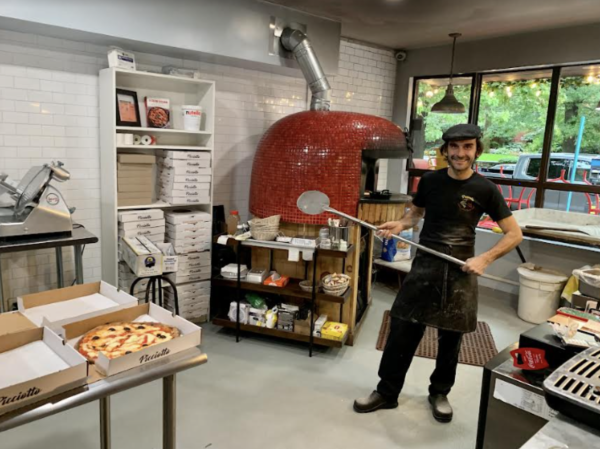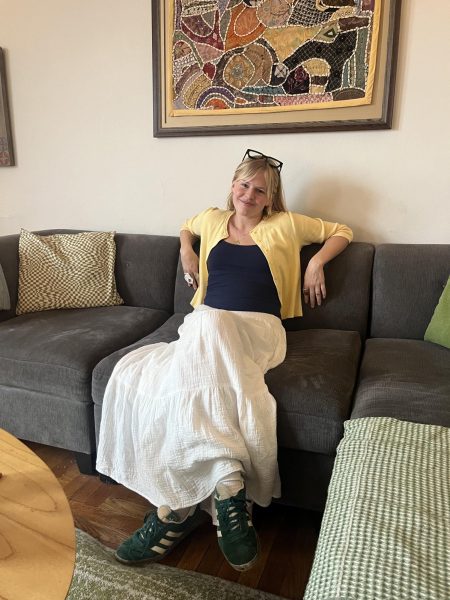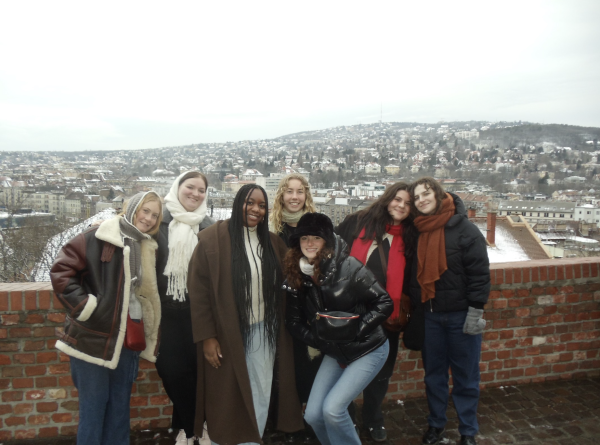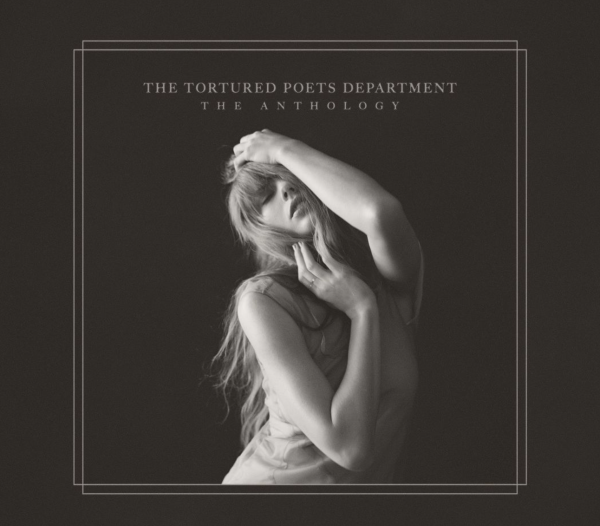A Different Kind of Meal: Dining in Spain
During a typical New York lunch break in the middle of the workweek, lines of sharply dressed businessmen and women stream outside the door of Sweetgreen, a popular salad restaurant chain. No matter which of the 22 locations in the city, customers are visibly annoyed at the five to 10-minute wait to order their lunch, while others choose to avoid the line most prominent by ordering their meal online. Empty tables and chairs reflect the grab-and-go culture of a lunch “break.” For many Americans, an hour-long sit-down lunch is not an option. In Madrid, however, there is no other way to spend the afternoon.
When it comes to living well, Spain is an expert. Last semester, I studied abroad in Spain. Not only is Spain one of the healthiest nations with the longest life expectancy in Europe. The Spanish lifestyle is like no other in the world. It includes a daily schedule marked by a three-hour-long siesta, rigidly-set eating hours, non-existent personal boundaries, quirky traditions and a contagiously strong sense of community, living in Spain is as weird as it is lovely. But one of the most significant markers of this distinct Spanish lifestyle is its restaurant culture.
To people in Spain, eating is more than just a way to fuel your body. Although many Spanish people of Spain love their food, going out to eat is about more than just what’s on your plate. Spaniards believe in taking their time and enjoying their meals as a way to hang with friends and family.
The culture in Spain heavily emphasizes the importance of spending time with family and friends, and this Spanish value extends to restaurants and outside the home.
Restaurants could not be more alive during the hours of 1:30-4:30 p.m., with people enjoying their two to three-hour-long lunch. This midday meal is the biggest meal of the day in Spain. Lunch includes various courses, as well as alcohol, no matter what day of the week it is.
Valentina Ruffoni, a middle-aged woman originally from London who has lived in Madrid for three years, knows this distinct restaurant culture better than anyone. She is the founder of Eat Out Madrid, an online community of over 6,000 food lovers in Madrid looking for the best places to eat and drink.
Ruffoni said the restaurant lifestyle in Spain is an essential part of the culture. Even when it is the middle of a workday, she said it is customary to drink alcohol during meals. Ruffoni remembers her experience as difficult when she was adjusting to Spanish drinking life.
“You drink at any time of the day,” she says. “And it’s so hard not to drink because it’s an essential part of the culture and it’s so cheap.”
Spain is one of the cheapest countries when it comes to eating and going out.
“It certainly doesn’t break the bank,” said Bruno Squarca, owner of the restaurant Ouh… Babbo! in the Opera area of Madrid.
Squarca moved to Madrid about ten years ago, and described his visit to New York City as one of his most expensive vacations ever, purely because of the prices of the restaurants.
In Spain, prices make it easier to go out.
“The beer and wine are made here in Madrid or close to Madrid, so for that reason, it is so ridiculously cheap,” said Squarca.
Along with free classic Spanish tapas that come with drinks, such as a tortilla or croquettes, one can walk out of a restaurant, having only spent one euro (about $1.10) on a glass of wine. The proliferation of restaurants and bars in a Spanish city like Madrid also drives competition, which may be another factor in low prices.
“No one’s going to choose an overpriced restaurant with all the other great cheap restaurants here,” Squarca said.
Another unique aspect that makes up the Spanish restaurant culture is the special offer during the midday meal, the “menu del dia” (menu of the day). Enjoying the menu del dia is the most economical way to eat in Spain. The menu del dia was required for many restaurants in Spain by a law enacted in 1965. The law sets standards and pricing for the midday meal to benefit tourism. Initially targeting tourist areas, it became popular throughout Spain by the early 1970s.
At Restaurante Fresno in the Las Ventas barrio of Madrid, restaurant owner Alvaro Iso described what the menu del dia’s contents. “It’s basically three sections,” said Iso. “Which is also why lunches tend to be longer because people definitely take their time with each course.”
He said the first is “El Primero Plato,” which translates to “the first plate.” One can choose between two or three dishes. Bread is included and served with this course. Next is “El Segundo Plato,” which is the main course of the lunch. Options usually include meat or fish, like bacalao, a popular Spanish fish. Lastly, he explained one finishes off their lunch on a sweet note, for all menu del dias offer a “postre” or dessert. You can bet the popular Spanish flan will be one of the options. A glass of water, beer or wine is included, and coffee may be served with the dessert.
Iso says his menu del dia goes for 10 euros (about $11.02).
“It’s my favorite part of the day and is extremely popular among customers,” Iso said. “I love seeing tourists get a menu del dia for the first time and being so surprised at how much they get at such a small cost.”
Spain is one of the cultural centers of Europe, and it has been called so for several years now. Spanish cuisine itself is incredibly unique in more ways than one, with Roman, Jewish and Arab traditions having a significant impact on Spanish food. The ways Spanish people enjoy this incredible cuisine are a staple of Spanish culture.
A famous Spanish saying sums it up perfectly: “A beber y a tragar, que el mundo se va a acabar,” which roughly translates to, “drink and swallow, for the world is going to end” but is the English colloquial of “eat, drink and be merry, for tomorrow we die.”
Find the Facebook group Eat Out Madrid on www.facebook.com.












Spain Residency • Oct 20, 2020 at 4:00 am
Nice Article !!
I was searching about meals of Spain !! After a lot of searches , i found this article which is too interesting and useful for everyone !!
Thank you so much for this amazing article !!
Now, i got information about a different kind of meal dining in Spain
Spain Residency